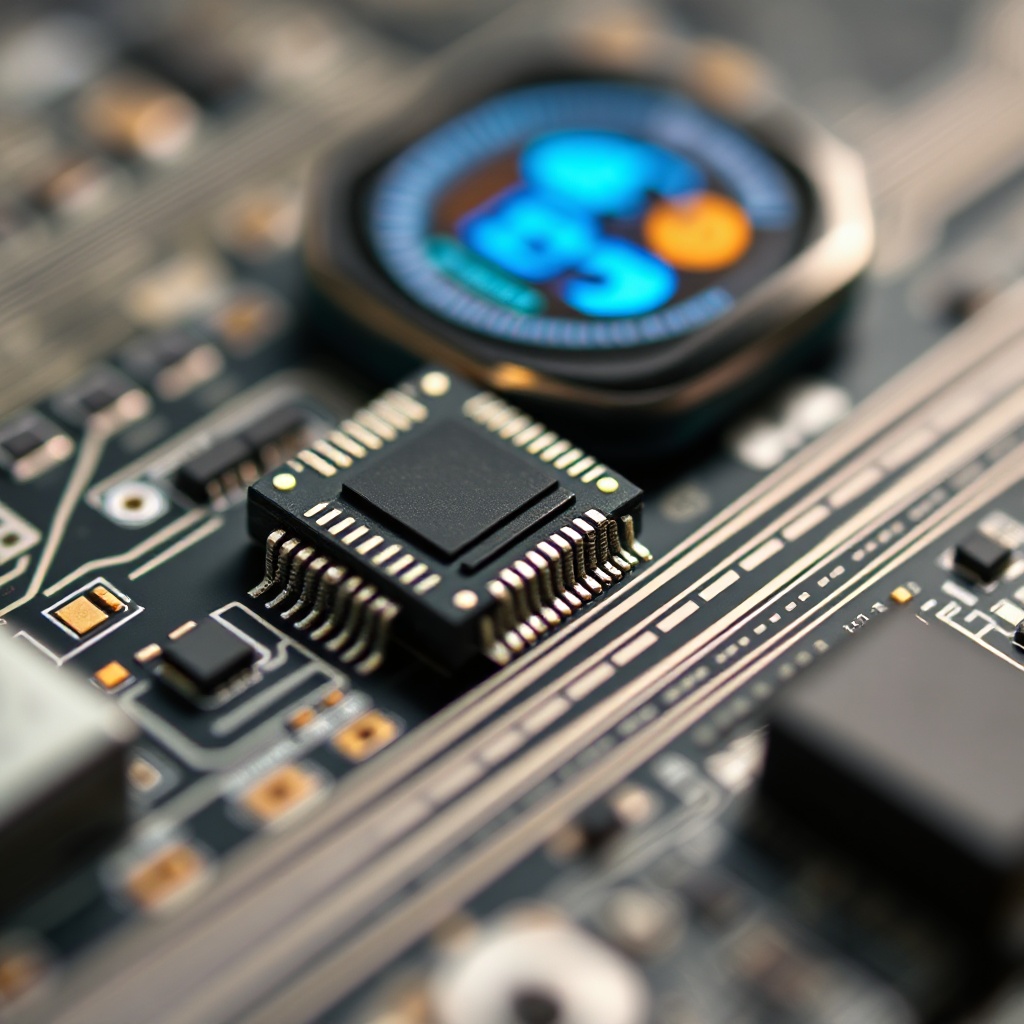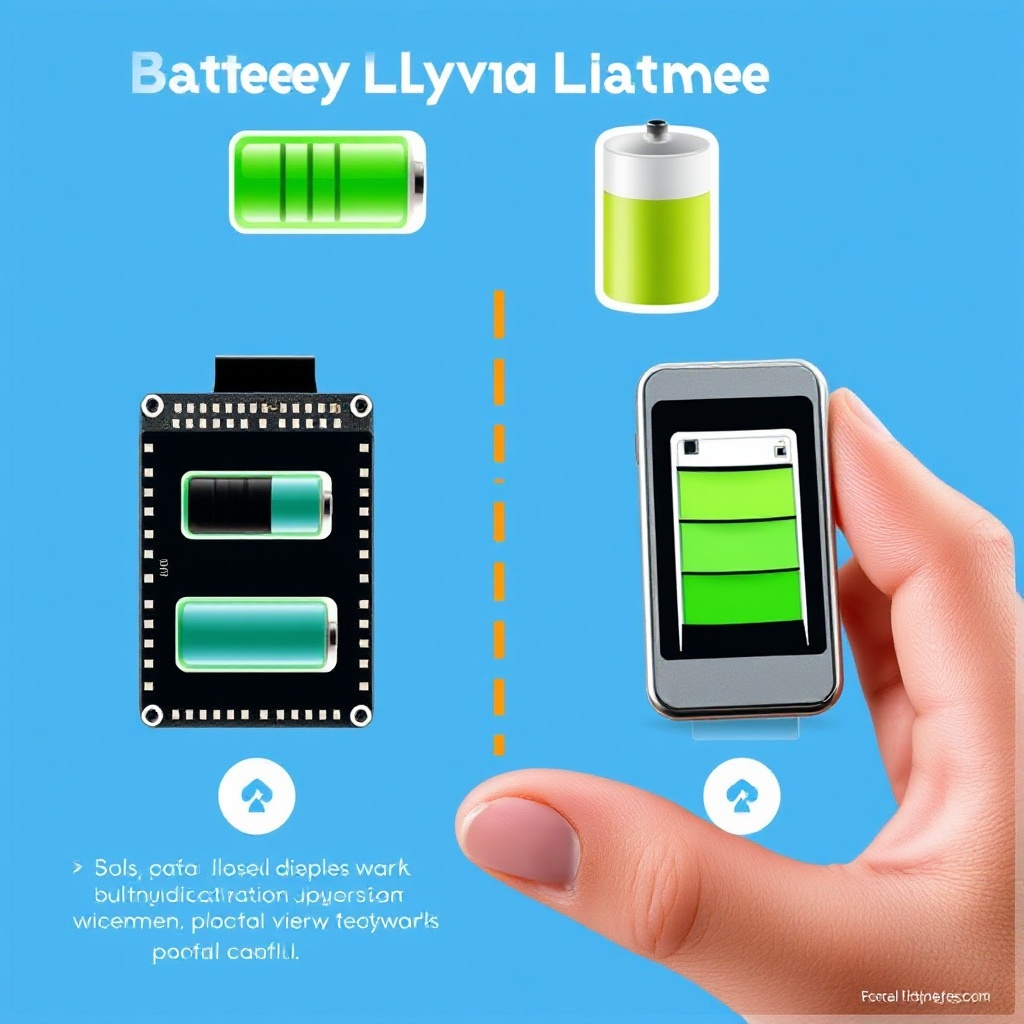
Ultra-low-power MCUs revolutionize portable electronics with 21-day battery life while delivering essential processing for IoT, healthcare, and wearable applications.

Drivetech Partners
Ultra-low-power microcontrollers are transforming portable electronics by delivering unprecedented battery life while maintaining essential processing capabilities for modern applications. These specialized MCUs from industry leaders like STMicroelectronics, Texas Instruments, Renesas, and Ambiq have crossed remarkable efficiency thresholds with innovations such as near-threshold technology and advanced power management systems that enable always-on functionality with minimal energy consumption.
Key Takeaways
The ULP microcontroller market is projected to reach $12.7 billion by 2030, growing at a CAGR of 8.9% from its current $7.6 billion valuation
STMicroelectronics' STM32U3 series has broken the symbolic 100 Coremark/mW threshold, achieving 117 Coremark/mW efficiency
Near-threshold voltage operation as low as 0.65V enables significant power savings while maintaining processing performance
Advanced ULP MCUs now enable 21 days of battery life in smartwatches and other wearable devices
These microcontrollers are driving innovation across healthcare, industrial IoT, and consumer electronics sectors
The Evolution of Ultra-Low-Power Microcontrollers
The quest for longer battery life in portable electronics has sparked a revolution in microcontroller design. Ultra-Low-Power (ULP) microcontrollers have emerged as the critical technology enabling the next generation of portable and battery-powered devices. These specialized chips can maintain power budgets as low as 1mW while delivering the processing capabilities needed for sophisticated applications.
Market projections highlight the rapidly growing importance of this technology. According to recent reports, the ULP microcontroller market is valued at $7.6 billion in 2024 and expected to reach $12.7 billion by 2030, growing at a CAGR of 8.9%. Alternative forecasts suggest even faster growth rates, with 360iResearch estimating a CAGR of 11.86%.

This growth comes as ULP MCUs make up an increasingly important segment of the overall microcontroller market, which is projected to expand from $22.1 billion in 2024 to $32.8 billion by 2030. The outsize influence of these specialized chips stems from their crucial role in enabling the battery-powered IoT revolution.
Leading Innovations from Industry Pioneers
Several key manufacturers are pushing the boundaries of what's possible in low-power microcontroller design. STMicroelectronics recently unveiled its STM32U3 series, featuring near-threshold technology that allows operation at voltages as low as 0.65V. This advancement has enabled these MCUs to break the symbolic 100 Coremark/mW efficiency threshold, achieving an impressive 117 Coremark/mW – more than double the 53.9 rating of their previous STM32U5 series.
Texas Instruments continues to innovate with its MSP430 family, which features five distinct low-power modes that optimize energy consumption based on application requirements. This granular approach to power management allows developers to fine-tune their designs for maximum battery life.
Renesas has made headlines with its new RA2L2 group, which is the first in the industry to support USB-C Rev 2.4 standard. This advancement combines ultra-low-power performance (87.5 μA/MHz in active mode and just 250nA in software standby) with cutting-edge connectivity options.
Perhaps most impressive for end-users is Ambiq's Apollo4 processor, which has enabled smartwatches to run for 21 days without recharging – a dramatic improvement over previous generations that required daily or bi-daily charging.
Technological Breakthroughs Driving Battery Life Extension
The remarkable battery life extensions achieved by modern ULP MCUs stem from several key technological breakthroughs. Power consumption metrics have reached previously unimaginable levels, with the latest designs achieving dynamic power as low as 10μA/MHz and stop currents of just 1.6μA in the case of the STM32U3.
These efficiency gains haven't come at the expense of capability. Modern ULP MCUs feature up to 1MB Flash memory and 256kB SRAM, with processing capabilities built around Arm Cortex-M33 cores running at speeds up to 96MHz. Many designs also support extended industrial temperature ranges from -40°C to 105°C, making them suitable for demanding environments.

Near-threshold operation represents one of the most significant advancements, with the latest chips operating at voltages as low as 0.65V. This approach dramatically reduces power consumption while maintaining processing capabilities. Some manufacturers have implemented AI-driven adaptive voltage scaling at the wafer level to compensate for process variations, further optimizing power efficiency.
Market Drivers and Growth Factors
Several powerful trends are driving the rapid growth of the ULP microcontroller market. The explosive expansion of the Internet of Things (IoT) has created enormous demand for energy-efficient edge computing solutions that can operate for extended periods on battery power or even energy harvesting.
The wearable technology market continues its upward trajectory, with consumers increasingly expecting weeks rather than days of battery life from their devices. Simultaneously, the healthcare industry is rapidly adopting remote monitoring systems and implantable medical technologies that require ultra-low-power operation.
Government regulations and energy-efficiency standards are also playing a role, promoting reduced carbon footprints across industries. As consumer awareness of energy efficiency grows, manufacturers are increasingly turning to ULP MCUs to meet these expectations.
The rise of edge computing and AI at the device level is another significant driver, as processing data locally minimizes the need for energy-intensive cloud communication while maintaining privacy and reducing latency.
Applications Transforming Industries
ULP microcontrollers are enabling transformative applications across numerous industries. In consumer electronics, they power wearables, smart home devices, and portable audio/video equipment with unprecedented battery life.
The healthcare sector has embraced these technologies for remote patient monitoring, medical wearables, glucose monitors, and even implantable devices that can operate safely within the human body for extended periods.
Industrial IoT applications benefit from ULP MCUs in sensors, automated systems, and environmental monitoring solutions that can be deployed in remote locations without frequent battery changes.
Additional sectors seeing significant impact include:
Automotive: Advanced driver assistance systems and in-vehicle networks
Telecommunications: Network equipment and wireless modules
Aerospace & Defense: Smart weapons and navigation systems
Connectivity and Security Features
Modern ULP microcontrollers pack impressive connectivity options alongside their power-saving capabilities. Renesas' ULP technology delivers 87.5 μA/MHz in active mode while supporting USB-C, LP UART, I3C, and CAN interfaces – reducing component count and simplifying designs.
Enhanced security features have become standard in new ULP MCU designs, protecting sensitive data even in low-power states. This integration of advanced connectivity and security in single microcontrollers represents a significant advancement over previous generations that required separate chips for these functions.
The STM32U3 series exemplifies this trend, supporting operating voltages up to 3V and temperatures of 105°C for industrial applications while maintaining its ultra-low-power characteristics.
Emerging Trends and Future Directions
The ULP microcontroller market continues to evolve rapidly, with several clear trends emerging. Miniaturization without performance sacrifice is driving innovations in fabrication processes, while traditionally distinct technologies are converging into unified systems.
The focus on local data processing with minimal energy usage continues to grow, enabling intelligent devices that can make decisions without constant cloud connectivity. This trend is particularly evident in smart homes, cities, and industrial automation applications.
Perhaps most significantly, ULP MCUs have achieved energy efficiency measurements up to 117 Coremark/mW, setting new industry benchmarks that were unimaginable just a few years ago.
Performance-Power Consumption Balancing Act
The most challenging aspect of ULP MCU design remains balancing increasing processing demands with stringent power limitations. Ambiq's SPOT platform exemplifies this balancing act, enabling ultra-low-power operation while maintaining substantial processing capabilities.
Texas Instruments has achieved nanoamp-level power consumption in standby modes with its MSP430 family, while STMicroelectronics' STM32U3 microcontrollers set new benchmarks for power efficiency in active states.
Renesas has approached this challenge through innovative circuit design, achieving 87.5 μA/MHz in active mode – an impressive feat considering the comprehensive feature set included in these devices.
As portable electronics continue to evolve, this delicate balance between performance and power consumption will remain the primary focus of ULP MCU development, driving further innovations that extend battery life while enabling increasingly sophisticated applications.
Sources
GlobeNewswire: Ultra-Low-Power (ULP) Microcontrollers Industry Trends and Strategic Outlook 2025-2030
TBRC Blog: Ultra-Low-Power Microcontroller Market Share
MarketsAndMarkets: Ultra-Low Power Microcontroller Market
ST Blog: STM32U3
MarketScreener: Renesas Electronics Corporation Brings USB-C Rev 2.4 Support to New Ultra-Low Power RA2L2 Microcontrollers






